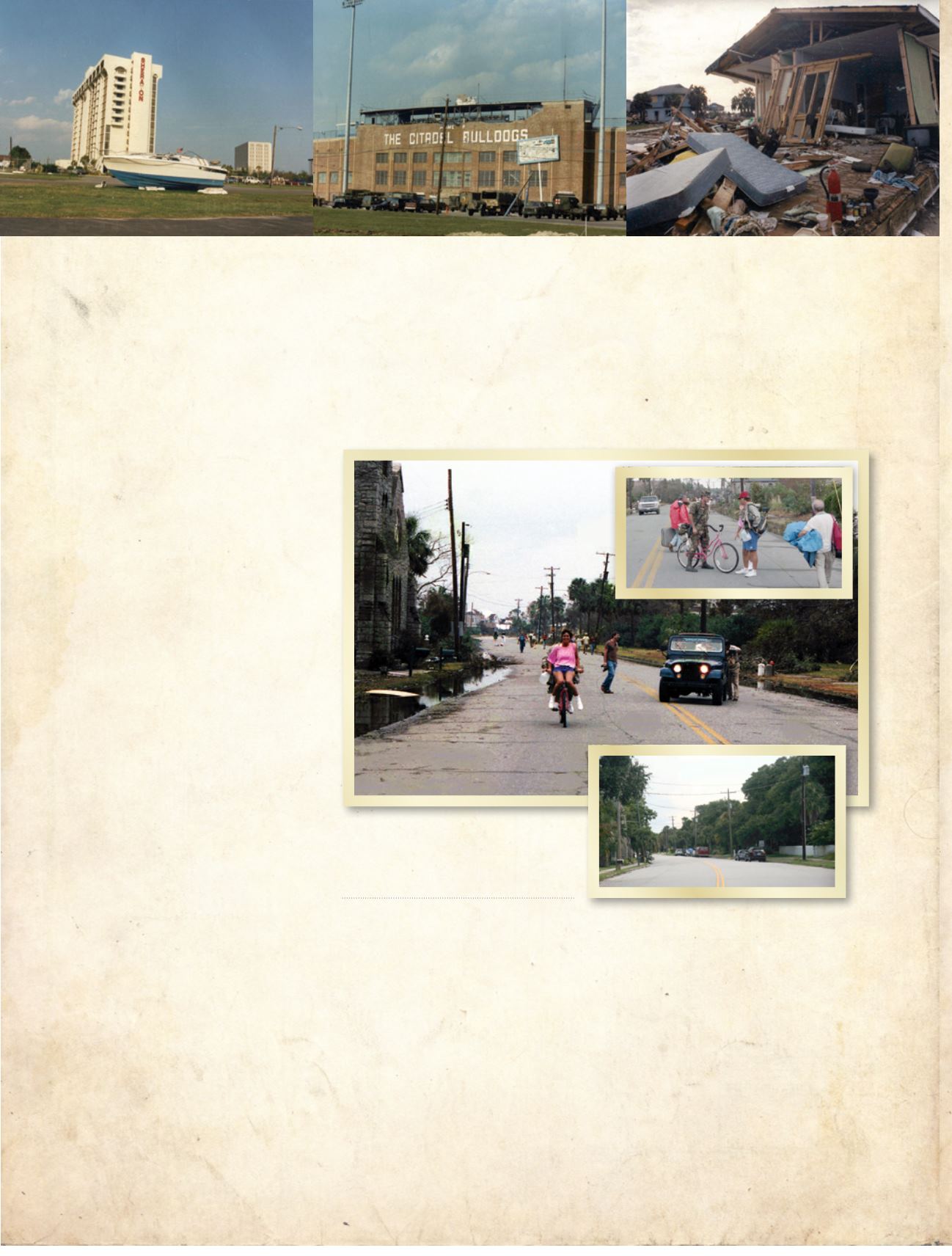

20
www.HugoMagazine.com|
www.BestOfMountPleasant.com|
www.MountPleasantMagazine.comKim knew there was only one
thing on my mind: getting my
magazine to the printer. Neither of us
knew that tens of thousands of people
would be caught up in gridlock trying
to flee the hurricane and that Hugo’s
winds were going to smash into Sulli-
van’s Island and make landfall around
midnight on Sept. 21, with maximum
sustained winds of 140 mph.
Kim and I left for Columbia late
that night. I remember commenting
that it was 1 a.m. and that the traffic
was chugging along as if it were 1
p.m. We got to Columbia in about
two hours, faring much better than
those who tried to make the trip in
the days that followed. For many of
them, the 120-mile journey took nine
hours or longer.
The next morning, I was able to
get
East Cooper Magazine
on one of
the last flights out of Columbia, safely
away from the devastation Hugo was
about to bring. Now I could focus on
what everyone else seemed to be con-
cerned about – the whereabouts of this
monster storm. Also on my radar were
Kim’s pregnancy and the safety of our
other two boys, Drew and Ryan.
Hugo was a few hundred miles off
shore and picking up speed and wind
velocity, and the world anxiously await-
ed the next report from the hurricane
hunters, brave or possibly crazy pilots
who flew toward rather than away from
Hugo to gather storm data. We still
were unaware that at the time, Hugo
would be the strongest storm ever to hit
the East Coast of the United States.
There was a lot of speculation
about the intensity of Hugo, where
it would come ashore and when.
Drew, my oldest son, had talked to
his mother in Charlotte, and she
offered us the safety of her house.
As we headed to North Carolina, we
continued to track Hugo, which was
threatening everything and everyone
in its path. We were like thousands of
other refugees of this monster storm,
anxious to hear any news about where
Hugo had been and how much dam-
age it had caused. As worried as we
were, at least we were together.
Documenting Hurricane Hugo’s
PatH of Destruction
We had been chased from our
home by this hurricane named Hugo,
a massive and destructive storm, ac-
cording to reports from the national
news outlets. One account said all
the historic homes on the Battery had
been destroyed. Another said Sul-
livan’s Island was totally washed away.
We didn’t know what to believe and
what to pass off as exaggeration. And
we didn’t know that Hugo would be
the most costly hurricane to date,
causing $10 billion in damage.
We decided to head back home,
and, as we drove into Charleston, the
Holy City looked like a war zone, a
scene out of a science fiction movie.
Hugo’s strong winds had turned
Charleston’s vast number of pine trees
into fields of toothpicks. Even worse,
Hugo spawned the highest tides ever
recorded on the East Coast. Boats
were scattered along Lockwood Bou-
levard and other roadways and piled
up against homes. Hugo had emptied
David and Susan Poulnot noticed a
national guardsman riding a pink bicycle
that looked familiar. As it turned out,
the bike was theirs, and the guardsman
returned it to them.
















